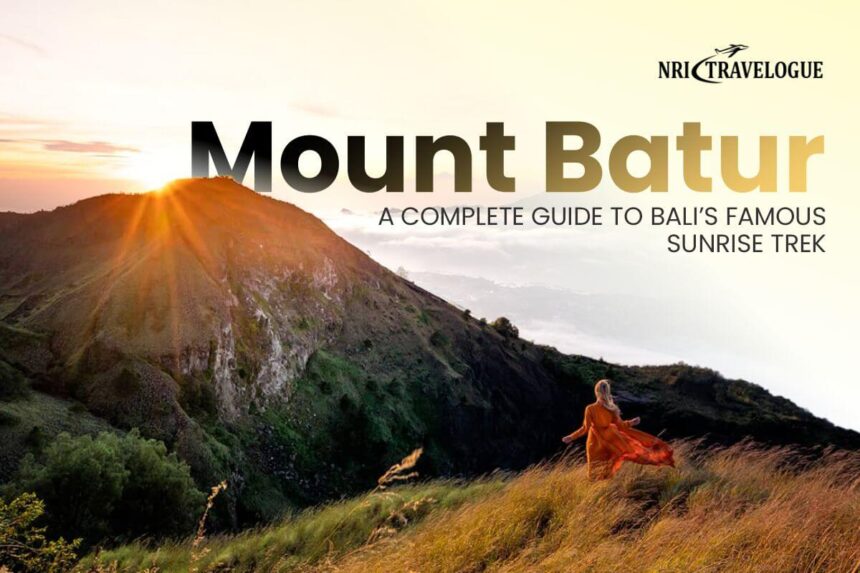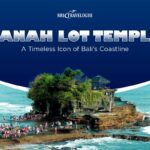There are places in the world that truly make you pause and reflect, and Mount Batur in Bali is one of them. Imagine standing on the edge of a volcanic crater as the first light of day slowly paints the sky in shades of orange and pink. Around you, travelers from all corners of the globe watch quietly, mesmerized by the sun rising behind Mount Agung, Bali’s tallest volcano.
Mount Batur is not just a hike—it’s an experience that lingers with you long after you’ve returned to your hotel or villa. For many, it’s the highlight of their Bali trip. If you’re thinking about making the trek, or you just want to know what makes this mountain so special, you’re in the right place. This guide covers not only the practical aspects but also personal insights, cultural context, and travel tips that can make your journey feel smooth and unforgettable.
What Makes Mount Batur So Special?
At 1,717 meters above sea level, Mount Batur might not be the highest peak in Bali, but it’s certainly the most popular. What draws travelers here is not just its accessibility but also the promise of that sunrise. Unlike taller peaks that take long and exhausting climbs, this hike is achievable for most fitness levels, averaging 1.5 to 2.5 hours to reach the summit.

Having personally done the trek twice, I can say the magic lies in the contrast between effort and reward. The climb is challenging enough to feel like an achievement but short enough to keep you energized for the rest of the day. And the views? They’re simply spectacular. From the top, you can see Lake Batur shimmering below, the caldera stretching out dramatically, and Mount Agung standing majestically in the distance. On clear days, you may even catch a glimpse of Mount Rinjani in Lombok.
The Best Time to Hike Mount Batur
Timing is everything with this mountain. The trek is famous for sunrise hikes, and there’s a good reason for that: the light show at dawn is unforgettable.
Ideal Season: The dry season (April to October) is the best time to hike. Clearer skies mean better sunrises. The rainy season (November to March) can make the trail slippery, and cloud cover might reduce visibility.

Start Time: Most tours pick you up from Ubud or Kuta around 2:00–2:30 AM. Yes, it’s an early start, but you need to reach the base by around 4:00 AM to begin hiking and reach the top before sunrise.

Crowds: Expect company! You won’t be alone on the trail, especially during peak months like July and August. However, the energy of fellow hikers often adds to the excitement.

Personal tip: If you’re sensitive to cold, pack a lightweight jacket. Despite Bali’s tropical reputation, it gets chilly at the summit in the early morning hours.
What to Expect on the Hike
When people hear “volcano hike,” they imagine rugged terrain and extreme difficulty. That’s not the case here. Still, knowing what to expect helps.
- Trail Conditions: The hike starts on gently sloping paths but quickly turns steeper and rockier. Think volcanic gravel, uneven steps, and small boulders along the way. Good shoes are a must—avoid sandals or flimsy sneakers.
- Pace: Local guides usually set a manageable pace, stopping frequently to let the group catch their breath. You don’t need to be an athlete to summit, but having moderate fitness makes it more enjoyable.
- Finish Line: Reaching the top, you often get a small “summit breakfast” prepared by guides—usually bananas, boiled eggs cooked using volcanic steam, and tea or coffee. Somehow, food tastes better when eaten with a sunrise.
- Descent: While the climb up happens in the dark, the descent gives you entirely new perspectives—lush greenery, sweeping views of Lake Batur, and sometimes even playful monkeys greeting hikers.
I’ve always found the descent more rewarding because you can finally see where you’ve been climbing for the past two hours. It turns the hike into a complete story rather than just a sunrise chase.
Practical Tips for a Successful Trek
Traveling smart makes all the difference. Here’s what I recommend packing for a smooth experience:
- Clothing: Layered clothing is best. A jacket for the summit, breathable shirt for the climb, and lightweight pants or leggings.
- Shoes: Sturdy trainers or lightweight hiking boots. Avoid anything with poor grip.
- Essentials: Small backpack, water, headlamp or flashlight (though guides usually provide), and a spare power bank for your phone camera.
- Snacks: Even though breakfast is offered, pack a few protein bars or fruit for energy mid-hike.
- Guide: By law, hikers are required to go with a local guide. This isn’t just regulation; guides know the trail, keep the pace manageable, and ensure safety.
A little preparation saves you from unnecessary discomfort. I’ve seen people underestimate the cold or wear shoes without grip and struggle significantly. With the right choices, the experience becomes much smoother.
The Cultural and Spiritual Side of Mount Batur
While most people come for the sunrise, Mount Batur is more than a scenic viewpoint. It has deep cultural and spiritual importance. The volcano is considered sacred by Balinese Hindus, and the nearby village of Batur is home to temples where rituals and ceremonies take place.
One of the most significant temples is Pura Ulun Danu Batur, located along the caldera rim. Dedicated to Dewi Danu, the goddess of lakes and rivers, it reflects the balance between nature and spirituality that’s central to Balinese culture.
Hiking Mount Batur isn’t just about ticking off a travel activity—it’s also a way to connect with local traditions. Understanding this adds a layer of meaning to the trek, turning it into both a physical and cultural journey.
Alternatives and Extensions to the Sunrise Trek
If you’re not an early riser or you dislike crowded trails, don’t worry. Mount Batur offers options:
- Sunset Trek: Less crowded, though the views at dusk can be just as enchanting. The descent afterward will be in the dark, so some people find it trickier than the sunrise trek.
- Overnight Camping: Spend a night under the stars near the summit. For adventure lovers, this transforms the hike into an immersive experience.
- Lake Batur Activities: After the hike, head down to Lake Batur for a relaxing stop. Some travelers enjoy soaking in nearby natural hot springs to relax their tired muscles.
Personally, I enjoyed following my hike with a dip in Toya Devasya hot springs. The contrast of the cool morning hike followed by a warm mineral soak overlooking the lake was simply perfect.
Combining Mount Batur With Other Bali Highlights
If you’re short on time in Bali, pairing Mount Batur with nearby attractions makes sense. Many tours offer add-ons like:
- Coffee plantation visits (yes, including the famous luwak coffee).
- Stops at rice terraces in Tegallalang.
- Visits to Tirta Empul, a sacred water temple.
If you’re planning a full-day outing, these additions help you maximize your time in Bali’s heartland without rushing back too quickly after the hike.
Conclusion: Why Mount Batur Should Be on Your List
Climbing Mount Batur is more than a physical adventure. It’s one of those rare travel experiences that combines natural beauty, cultural resonance, and a sense of personal accomplishment. You don’t need to be an expert climber or an adrenaline junkie; all you need is the willingness to wake up early and be open to the experience.
The sunrise is the obvious reward, but the real takeaway is what stays with you afterward: standing above the clouds, feeling the energy of an active volcano, and sharing the moment with strangers who suddenly feel like friends.
If you’re heading to Bali, make this trek a part of your journey. Pack wisely, set your alarm early, and prepare for a memory that will stay with you long after you’ve left the island.
The trek usually takes 1.5 to 2.5 hours depending on your fitness level and pace.
The dry season (April to October) offers the clearest skies and best sunrise views. Starting early morning around 4:00 AM ensures you reach the summit before sunrise.
Yes, hiring a local guide is mandatory and ensures safety, navigation, and a smooth trekking experience.
Layered clothing is best. Bring a jacket for the chilly summit, comfortable hiking shoes with grip, and light clothing for the climb.
Yes, the trek is considered moderate and suitable for most fitness levels, with frequent breaks led by guides.
Yes, there are sunset treks available. They are less crowded, but the descent happens in the dark, which can be more challenging.
Popular add-ons include visiting a coffee plantation, relaxing in Batur hot springs, exploring Tegallalang Rice Terraces, or visiting Tirta Empul Temple.









